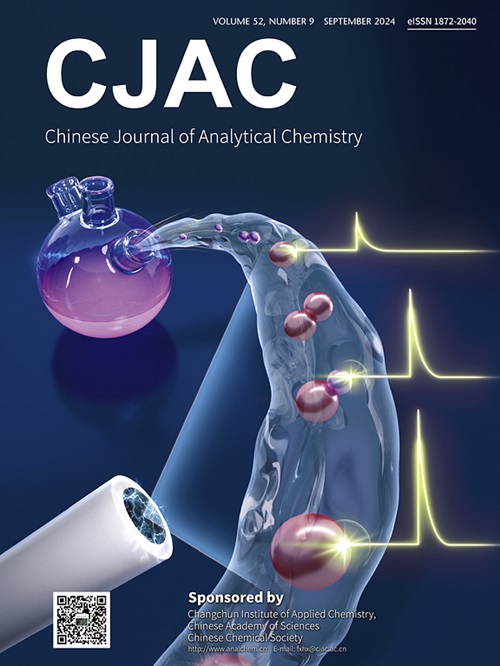Analyze the application and mechanism of Traditional Chinese Medicine in chronic urticaria based on data mining and network pharmacology
IF 1.3
4区 化学
Q4 CHEMISTRY, ANALYTICAL
引用次数: 0
Abstract
Objective
Chronic urticaria (CU) is a prevalent skin condition. Increasing evidence supports the efficacy of traditional Chinese medicine (TCM) in its management. This study aims to identify the primary bioactive constituents and elucidate the potential molecular mechanisms of key TCM drug combinations for CU treatment, utilizing data mining, network pharmacology, and molecular docking.
Methods
Relevant TCM prescriptions for the treatment of CU were collected from multiple databases, including CNKI, VIP, Wan Fang Database, Embase, PubMed, and Web of Science. Data were analyzed using IBM SPSS Modeler 18.0 to identify core drug pairs with the highest confidence levels. Active ingredients and target predictions for these core drug pairs were determined using the TCMSP, BATMAN-TCM, HERB, and SwissTargetPrediction databases. CU-related targets were obtained from OMIM, DisGeNET, GeneCards, PharmGKB, CTD, and Drugbank, and intersected with disease targets retrieved from the GEO database. These targets were further intersected with drug targets and analyzed within the STRING database for protein-protein interaction (PPI) network analysis, visualized using Cytoscape 3.7.2, and core nodes in the network were identified using the CytoHubba plugin. The intersecting targets of drugs and diseases were subjected to GO and KEGG pathway analysis via the DAVID database and analyzed for their distribution across 84 target organs in the human body using the BioGps database. Molecular docking validation was performed using AutoDockTools 1.5.6, AutoDock Vina, and PyMOL software.
Results
Through the application of inclusion and exclusion criteria, 374 articles were identified, encompassing 344 prescriptions and 198 herbs. The core drug combination “Saposhnikoviae Radix-Schizonepetae Herba-Cicadae Periostracum” (FF-JJ-CT) with the highest confidence level was selected. A total of 45 active ingredients and 780 unique potential targets were screened, and 50 disease targets were obtained. Twelve targets at the intersection of herbs and diseases were identified. A PPI network was constructed, and seven core targets (VCAM1, STAT3, SELE, MYC, ITGB2, ICAM1, HIF1A) were screened based on degree centrality (DC) ≥ 10. GO and KEGG analyses revealed that the intersecting targets were primarily enriched in pathways related to cell adhesion molecules, the TNF signaling pathway, and the AGE-RAGE signaling pathway. The target organs were predominantly expressed in whole blood and the immune system (CD33+_Myeloid, CD14+_Monocytes, BDCA4+_DentriticCells, CD56+_NKCells). Molecular docking results indicated that the active ingredients Quercetin, Decursin, Andrographolide, and its derivative 14_deoxy_11_oxa_andrographolide from the “FF-JJ-CT” combination exhibited favorable binding activities with the core targets ICAM1, ITGB2, STAT3, SELE, and VCAM1.
Conclusion
Our work, employing data mining and network pharmacology, expands the understanding of TCM in CU therapy, potentially providing an efficacious approach for the discovery and development of drugs derived from herbal sources.

基于数据挖掘和网络药理学分析中药在慢性荨麻疹中的应用及作用机制
目的慢性荨麻疹(CU)是一种常见的皮肤病。越来越多的证据支持中医药在其管理中的有效性。本研究旨在利用数据挖掘、网络药理学、分子对接等方法,鉴定CU治疗关键中药组合的主要生物活性成分,并阐明其潜在的分子机制。方法从中国知网(CNKI)、维普(VIP)、万方数据库、Embase、PubMed、Web of Science等数据库中收集治疗CU的相关中药方剂。采用IBM SPSS Modeler 18.0对数据进行分析,确定具有最高置信度的核心药物对。使用TCMSP、BATMAN-TCM、HERB和SwissTargetPrediction数据库确定这些核心药物对的有效成分和靶标预测。从OMIM、DisGeNET、GeneCards、PharmGKB、CTD和Drugbank中获得cu相关靶点,并与GEO数据库中检索的疾病靶点交叉。这些靶点进一步与药物靶点相交,并在STRING数据库中进行蛋白质-蛋白质相互作用(PPI)网络分析,使用Cytoscape 3.7.2进行可视化,并使用CytoHubba插件确定网络中的核心节点。通过DAVID数据库对药物和疾病的交叉靶点进行GO和KEGG通路分析,并使用BioGps数据库分析其在人体84个靶器官中的分布。使用AutoDockTools 1.5.6、AutoDock Vina和PyMOL软件进行分子对接验证。结果通过纳入和排除标准,共鉴定出374篇文献,其中处方344份,中药198份。选择置信度最高的核心药物组合“沙参-荆草-蝉皮”(FF-JJ-CT)。共筛选出45种有效成分和780个独特的潜在靶点,获得50个疾病靶点。确定了12个中草药与疾病交叉的靶点。构建PPI网络,根据度中心性(degree centrality, DC)≥10筛选出7个核心靶点(VCAM1、STAT3、SELE、MYC、ITGB2、ICAM1、HIF1A)。GO和KEGG分析显示,交叉靶点主要富集于与细胞粘附分子、TNF信号通路和AGE-RAGE信号通路相关的途径。靶器官主要在全血和免疫系统中表达(CD33+_Myeloid, CD14+_Monocytes, BDCA4+_DentriticCells, CD56+_NKCells)。分子对接结果表明,“ff - j - ct”组合的活性成分槲皮素、德库尔素、Andrographolide及其衍生物14_deoxy_11_oxa_andrographolide与核心靶点ICAM1、ITGB2、STAT3、SELE、VCAM1具有良好的结合活性。结论本研究运用数据挖掘和网络药理学技术,拓展了中医药在CU治疗中的应用,为中药衍生药物的发现和开发提供了一条有效途径。
本文章由计算机程序翻译,如有差异,请以英文原文为准。
求助全文
约1分钟内获得全文
求助全文
来源期刊
CiteScore
3.60
自引率
25.00%
发文量
17223
审稿时长
35 days
期刊介绍:
Chinese Journal of Analytical Chemistry(CJAC) is an academic journal of analytical chemistry established in 1972 and sponsored by the Chinese Chemical Society and Changchun Institute of Applied Chemistry, Chinese Academy of Sciences. Its objectives are to report the original scientific research achievements and review the recent development of analytical chemistry in all areas. The journal sets up 5 columns including Research Papers, Research Notes, Experimental Technique and Instrument, Review and Progress and Summary Accounts. The journal published monthly in Chinese language. A detailed abstract, keywords and the titles of figures and tables are provided in English, except column of Summary Accounts. Prof. Wang Erkang, an outstanding analytical chemist, academician of Chinese Academy of Sciences & Third World Academy of Sciences, holds the post of the Editor-in-chief.

 求助内容:
求助内容: 应助结果提醒方式:
应助结果提醒方式:


